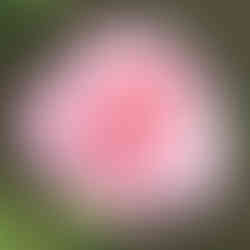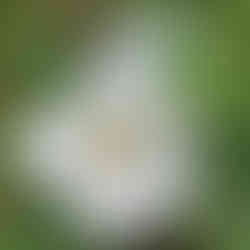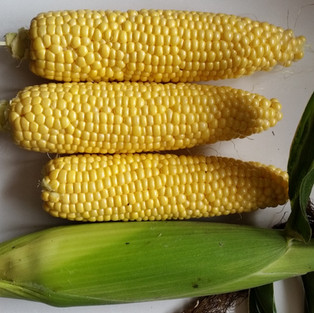Postcard from Scotland
- Clare
- Aug 19, 2020
- 4 min read
Updated: Aug 29, 2020
FaceTime is a wonderful thing for keeping in touch with distant family, though nothing beats meeting face to face. After a long wait, we finally got to spend some time with family in Scotland last week as we stayed a few days with Andy's parents in Gourock. It was a lovely visit in a beautiful place.

Gourock has the misfortune of being named after the gaelic word for "pimple", though this alludes to the hill that stands behind the town, and is by no means a representation of the town's appearance, as the above view (from one of the main streets) shows. The town was once a popular seaside resort, though is now principally a residential area, with easy links to Glasgow.

Standing on a hill overlooking the main street of Gourock is a megalithic standing stone known as "Granny Kempock". The stone's origins are largely unknown though it may have been an altar to a Pagan god, or a memorial to an ancient battle. It remained as a good luck charm for many years and sailors (or couples about to be married) would walk around the stone to ensure good fortune. Unfortunately, it also has a more sinister association. In the latter half of the seventeenth century, a group of local women were burned at the stake as witches after allegedly dancing around the Kempock stone and attempting to throw it into the Clyde, with the intention of causing the sinking of ships. One of these women, Marie Lamont, was only a teenager when she died.
From the sadness of Granny Kempock, to the loveliness of granny's hanging baskets which are stunning every year, even with the constraints of lockdown:
The following visitor also came to the garden every evening at around 9 pm. He (or she) was sometimes accompanied by a friend and was a joy to watch.

We also had a lovely day walking in the hills around Loch Lomond:
The sight of a lovely view or a pretty flower lifts the spirits and is food for the soul. It may be the romantic in me, but I believe this pull to the countryside and green open spaces is intrinsic, having evolved over thousands of years of our ancestors living off the land. I have said it many times, but this link to green spaces seems more important than ever during these troubled times as there is a greater need to escape the pressures of modern life and experience a sense of space and solitude. This view was expressed much more eloquently by the President of the Campaign to Protect Rural England (CPRE) and former Poet Laureate Andrew Motion:
"Our principles are fundamental in the most literal sense, because we are a species that evolved in the countryside and only very recently adapted to living in towns. Inside us all, wherever we live, however familiar we might or might not be with the countryside, is an absolutely primal atavistic need for green places and open spaces. The more we are bombarded by the demands of modern life, the more important it becomes to enjoy peace and quiet, more darkness, more solitude, more beauty, the pleasures of uncluttered ground. In the countryside time slows down, longer perspectives open, richer thoughts accumulate - because in the countryside we enjoy the essential things about being human; the things that link us with our better selves, and even allow us to see our less-good selves more clearly".
(taken from an edited extract of Andrew Motions speech to CPRE's 2013 AGM).
After our visit to Scotland, we arrived home to find our own garden looking pretty much the same as we had left it (thankfully!). The white daisies have almost fully died off now, though the buddleia, geraniums and lavatera are still holding on and the perennial sunflowers are a glorious mass of yellow. The crocosmia is still blooming though the display is not as impressive as it has been in previous years, most likely due to the prolonged dry spell we experienced in early Summer. The lavender flowers have fully opened and are covered in buzzing and fluttering insects. I took some cuttings from some of the non-flowering lavender stems this week and have added these to my growing plant nursery.
Other late Summer flowers are appearing in my yellow and cream border, such as the Japanese anemone displayed in the following trio of images. The sedum flowers are also starting to form (this is a wonderful late source of nectar for bees - they love it!) and my roses are still flowering on and off. The yellow Rosa "Arthur Bell" has been especially floriferous this year and has a lovely scent.
At the allotment, we are still harvesting courgettes (many had grown into marrows while we were away) and also picked the first of our corn this week which was delicious eaten off the cobb with lots of melted butter.
My whispers of encouragement to the fruit also must have worked (post hoc ergo propter hoc?) as the blackberries and apples have been particularly bountiful this year and we enjoyed our first apple and blackberry crumble of the season today.
As well as brief forays into the garden this week, we also managed a walk to Wittenham Clumps between rain showers. It's a very picturesque spot with vistas across the fields of Oxfordshire, some of which have remained largely unchanged for centuries. The village of Dorchester, with its Norman Abbey is visible from one aspect, whilst the modern power station at Didcot can be seen from the other side of the hill.
As I stood looking at Dorchester Abbey across the fields earlier this week, I wondered how many pilgrims had enjoyed this same view, and how many more years it would last.
On a Lane In Spring
A little lane, the brook runs close beside
And spangles in the sunshine while the fish glide swiftly by
And hedges leafing with the green spring tide
From out their greenery the old birds fly
And chirp and whistle in the morning sun
The pilewort glitters 'neath the pale blue sky
The little robin has its nest begun
The grass green linnets round the bushes fly
How mild the spring comes in; the daisy buds
Lift up their golden blossoms to the sky
How lovely are the pingles and the woods
Here a beetle runs; and there a fly
Rests on the arum leaf in bottle green
And all the Spring in this sweet lane is seen.
John Clare















































Comments